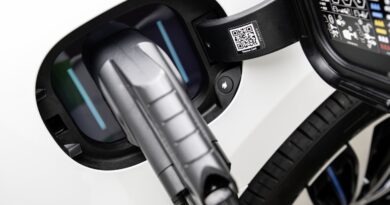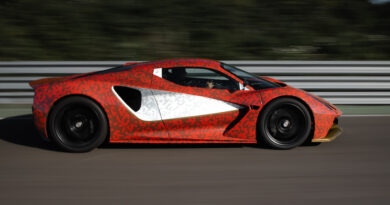Driven: Alfa Romeo Tonale Plug-in Hybrid Q4
Alfa Romeo’s new Tonale Plug-in Hybrid Q4 is the first ever vehicle from the venerable Italian car maker with a charging port. And the small SUV PHEV is also the starting point for the company’s five-year ‘Zero to Zero’ plan.
The snappy name neatly sums up the objective. Until the Tonale Plug-in Hybrid Q4, Alfa Romeo produced zero electrified models. By 2027 it will be building nothing but EVs with zero tailpipe emissions… and therefore have a line-up containing zero ICE-powered models.
The brand, these days part of the multi-national auto-industry giant Stellantis, claims no-one else in the business will complete the transition so quickly.
First deliveries of Tonale PHEV will reach European markets very early next year, but it won’t reach Australia until the fourth quarter of 2023.
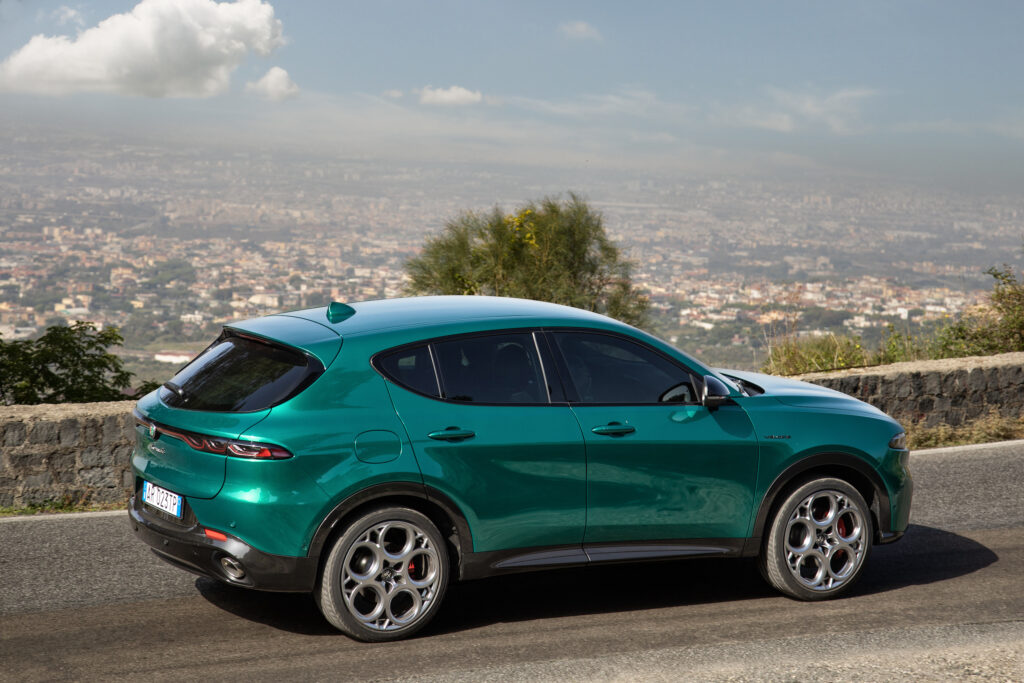
Background check
Like the low-voltage non-plug-in hybrid versions of the Tonale scheduled to go on sale in Australia around March 2023, the new Plug-in Hybrid Q4 has a lot in common with a couple of existing models made by Stellantis stablemate Jeep.
The Alfa Romeo uses basically the same PHEV powertrain hardware as the 4xe versions of the Compass and Renegade small SUVs already on sale in Europe. These never made it to Australia. Jeep pulled the Renegade out of the market here, and elected to not offer the Compass 4xe.
The Alfa Romeo is being built in the same factory in the south of Italy that turns out the Jeeps. The Tonale uses the same chassis platform as the Compass and Renegade, meaning the assembly process for all three is the same.
But the Italian-designed Tonale, arguably, is better looking inside and out than its Jeep-badged cousins. It will be sold only in top Ti and Veloce equipment grades.
In Australia, as elsewhere in the world, the Tonale Plug-in Hybrid Q4’s most obvious PHEV competitor will be the Volvo XC40 Recharge Hybrid. Stellantis Australia is a long way from finalising the Alfa’s pricing, but expect them to be aiming for the same $70,000-ish zone the Volvo plays in.
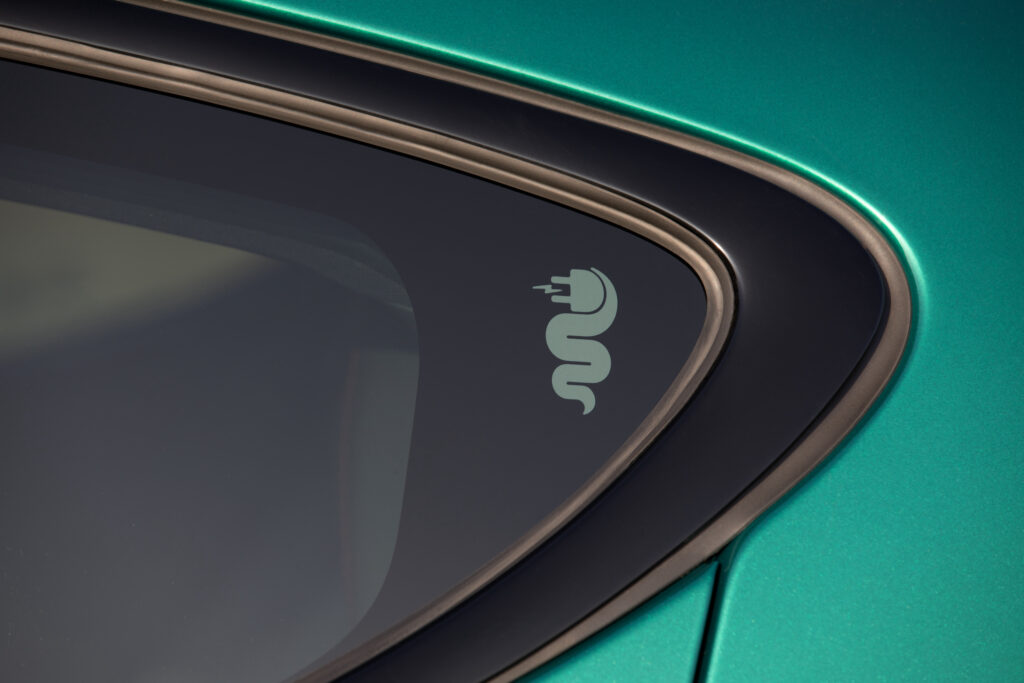
Split ends
With a turbo 1.3-litre four-cylinder driving its front wheels through a six-speed automatic transmission and an electric motor driving its rear wheels, the Tonale PHEV is an axle-split hybrid.
This layout makes the Alfa all-wheel-drive, earning it the ‘Q4’ part of its model name. There’s no mechanical connection between the front and rear axles. Co-ordinating which end does what, and when it does it, is handled entirely by software.
Though the capacity of the Alfa’s ICE is the same as the Jeeps already mentioned, for the Tonale PHEV maximum power has been increased to 132kW. The Alfa also has a larger battery pack under its centre tunnel and rear seat. The 300-volt, 125kg pack has a gross storage capacity of 15.5kW and contains cells produced by Chinese outfit CATL.
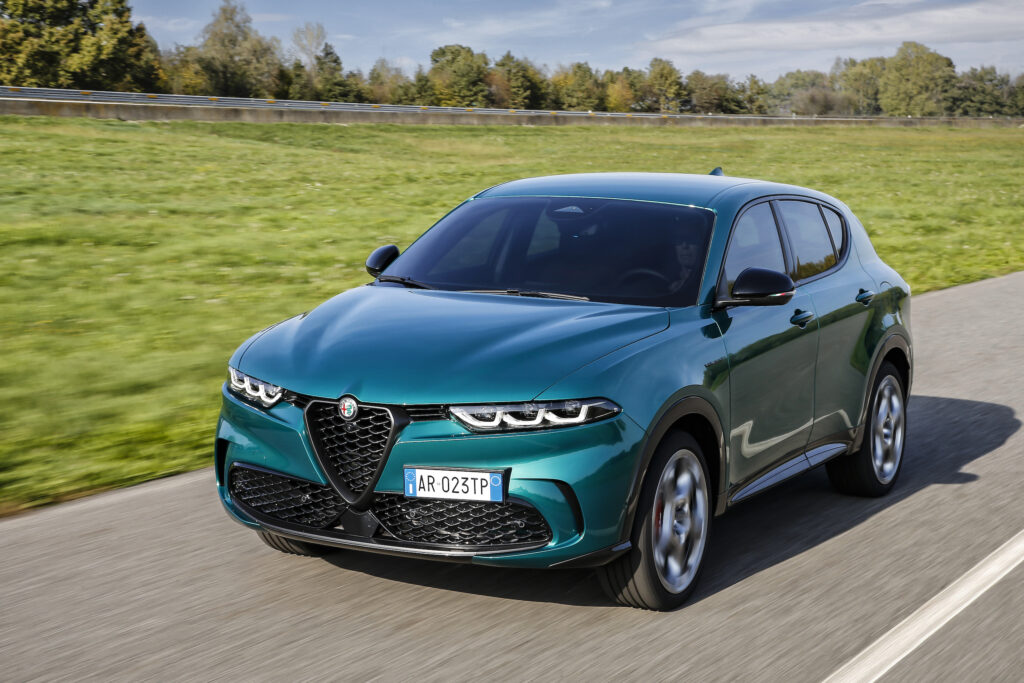
Combined maximum output of the powertrain is 206kW, and Alfa claims the Tonale can accelerate 0-100km/h in a snappy 6.2 seconds.
But the key statistic that’s more important for a PHEV is electric driving range. According to its WLTP efficiency test results, the Tonale is capable of a little over 80km of purely urban driving or a little under 70km of mixed driving. Top speed is restricted to 135km/h in electric.
The WLTP test also measures fuel use and emissions. Consumption is 1.1 to 1.4L/100km, for emissions of 26 to 33g/km. These numbers easily beat the XC40 Recharge Hybrid’s figures, and will be an important part of Alfa’s sales pitch to European private customers and fleet buyers.
As with any PHEV, actual fuel consumption will depend very much on how diligently users recharge the battery pack.
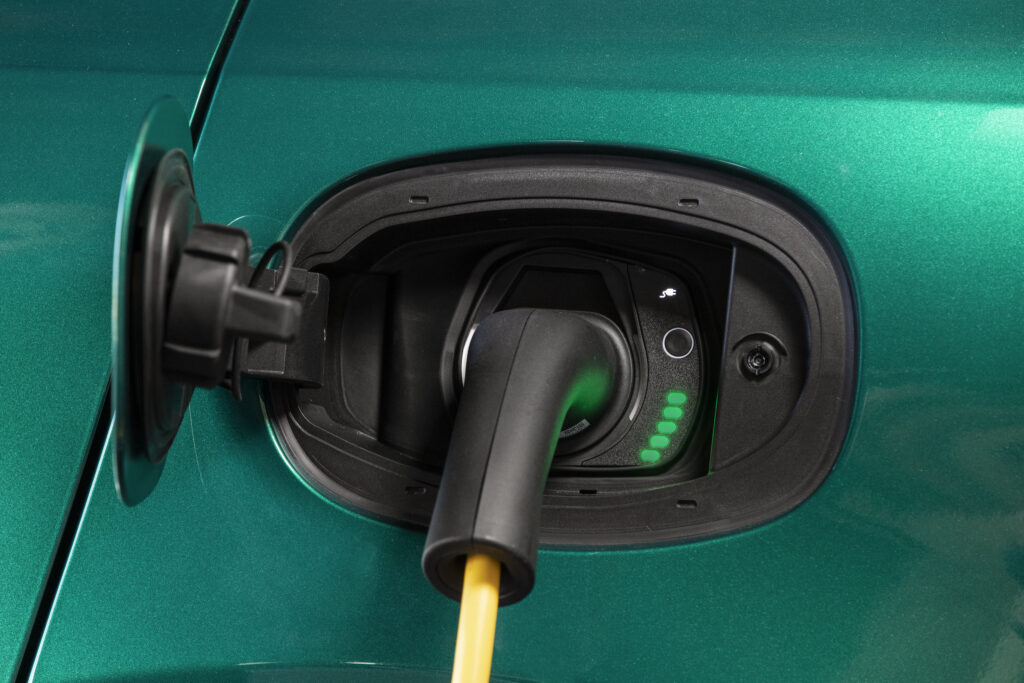
Charging
The only was to charge the Tonale’s relatively small battery is via the on-board AC charger. This can handle up to 7.4kW. Charged at this power it will take around 2.5 hours for a 0-100 percent recharge.
With a 3.6kW wallbox it’ll take roughly double the time, say around five hours. It’ll take longer again if the Alfa is plugged into a normal power socket delivering around 2.4kW.
The Tonale’s Type 2 charging port is behind a flap above the left-hand rear wheel and there’s a cable storage area under the cargo compartment floor.
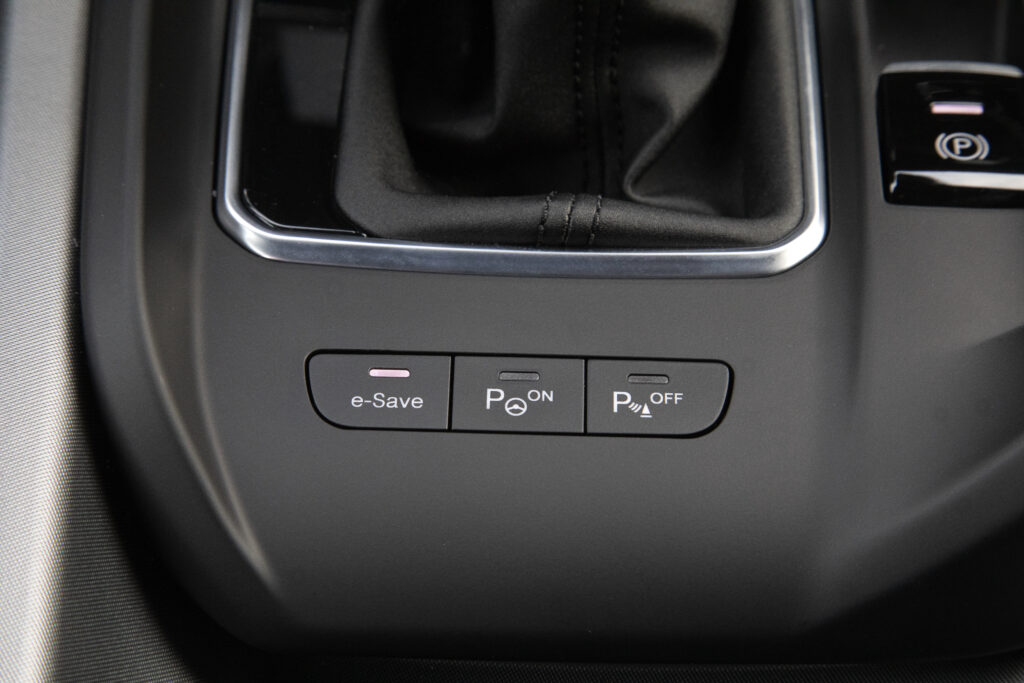
DNA test
Like other modern Alfas, the Tonale Plug-in Hybrid has a DNA driving mode selector dial. Unlike other Alfas, the A stands in this case for advanced efficiency. The D for dynamic and N for natural remain the same as in other models.
D maximises performance, throttle responsiveness and handling sportiness. N is basically a hybrid mode that manages use of the ICE and electric for efficiency without sacrificing performance.
A is calibrated primarily for energy efficiency in electric-only mode. The measures include throttle-off coasting, which Alfa, like some others, calls sailing. It’s possible to over-ride this by selecting E-Coasting in one of the set-up menus on the centre screen.
It doesn’t take long behind the wheel to discover that the Plug-in Hybrid is much more lively than lesser Tonale models, even if it doesn’t feel as quick as Alfa Romeo’s performance claim.
There’s good foot-flat thrust for overtaking in D and N, and the Tonale PHEV climbs steep roads with ease. While performance in electric-only A is much reduced, there’s more than enough oomph for round-town driving.
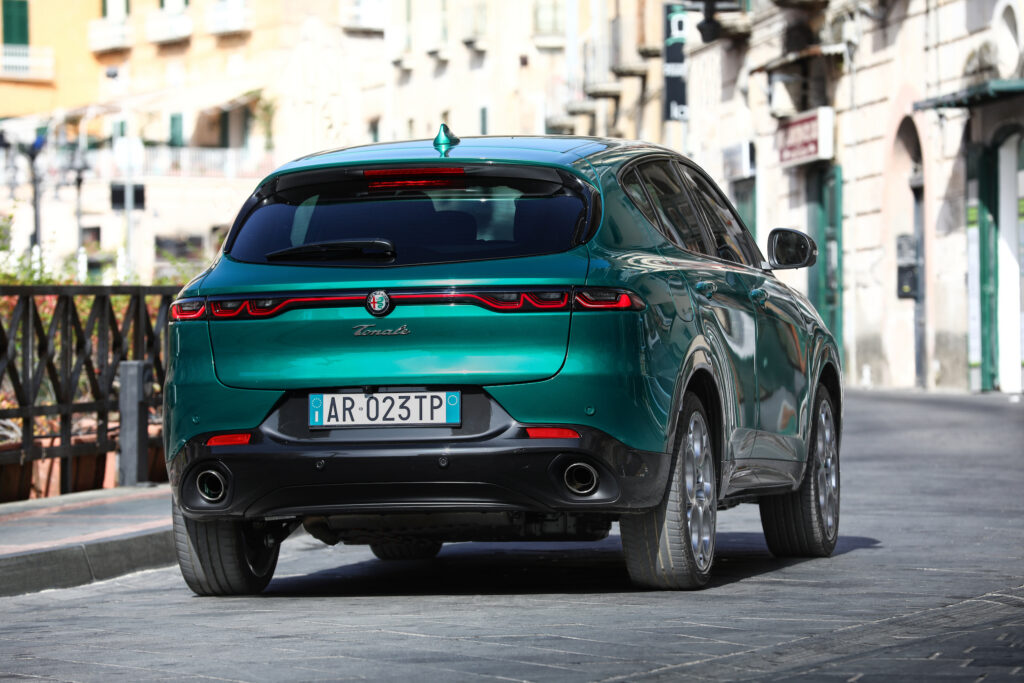
But, for a couple of reasons, the Tonale’s powertrain is something of a disappointment.
The ICE simply lacks charisma. It doesn’t sound great when pushed, and some engine vibes can be felt through the steering wheel at some points in the middle of its rev range.
Further, the electric motor doesn’t seem to deliver the same dose of low-end kick that some other PHEVs do in situations like accelerating out of tight bends. Perhaps the Tonale’s 1800kg-plus kerb weight has something to do with this.
To give the Tonale handling some Alfa Romeo flavor, the main change the company’s engineers made was to install quicker steering with fewer turns lock-to-lock.
While the steering is quite direct there’s very little road feel through the wheel. Wide tyres ensure there’s good cornering grip, but the aloof handling personality of the Tonale PHEV doesn’t really encourage enthusiastic driving.
Ride comfort is generally okay. The suspension could be a little more supple at low speed over sharp bumps and could be a little more disciplined at higher speeds, but most people who ride in it are unlikely to complain of discomfort.
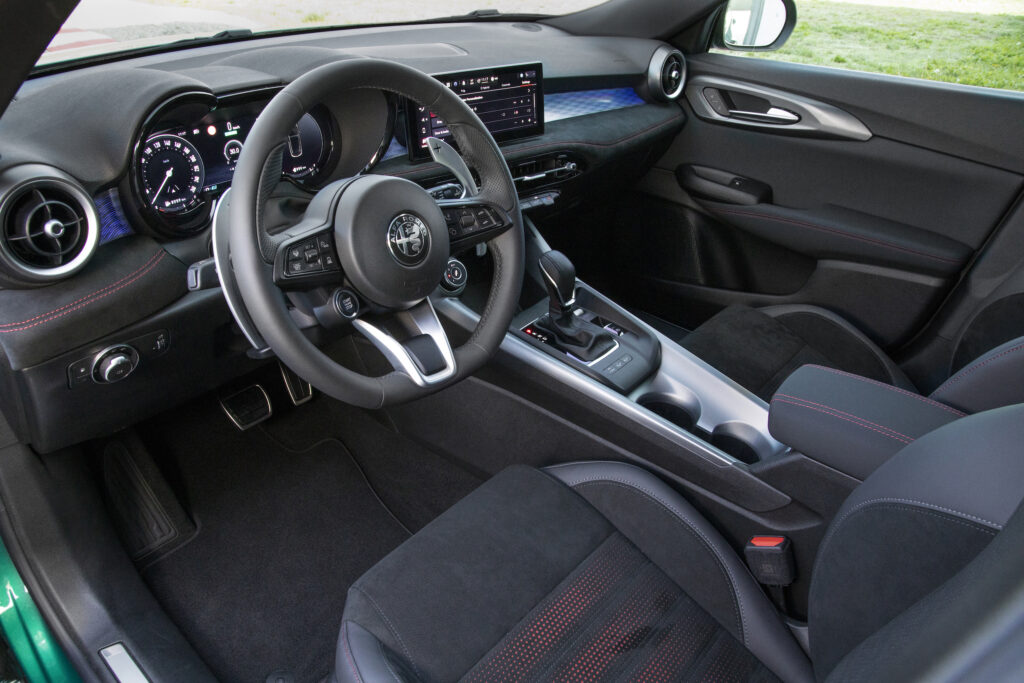
Inside story
Forgetting the subjective question of exterior good looks, the space, style and quality of the Tonale PHEV’s interior is its best functional aspect.
This is a roomy little SUV. Alfa says it designed the five-seat Tonale to be able to comfortably accomodate four 1.9-metre-tall occupants, and it feels that way.
The rear seats are both spacious and easy to access, thanks to wide-opening and well-dimensioned doors. There are air vents back there, too. And a pair of USB ports, one old-school, the other the newer Type C.
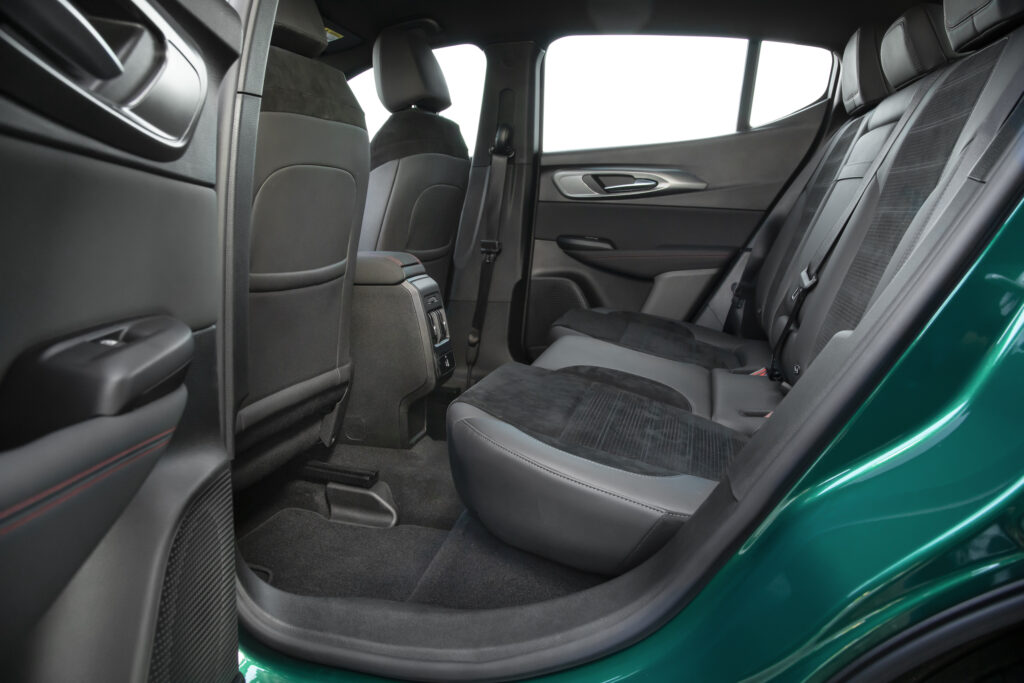
Up front are shapely and comfortable seats that deliver a good driving position. But it’s the good-looking instrument panel with its central infotainment touchscreen that’s the star attraction.
Recent Alfas, like the Giulia sedan and Stelvio SUV, have had woefully outdated infotainment tech. The Tonale doesn’t. Its responsive and reasonably intuitive to navigate Android-powered system rivals what’s offered by competitors, including over-the-air updates.
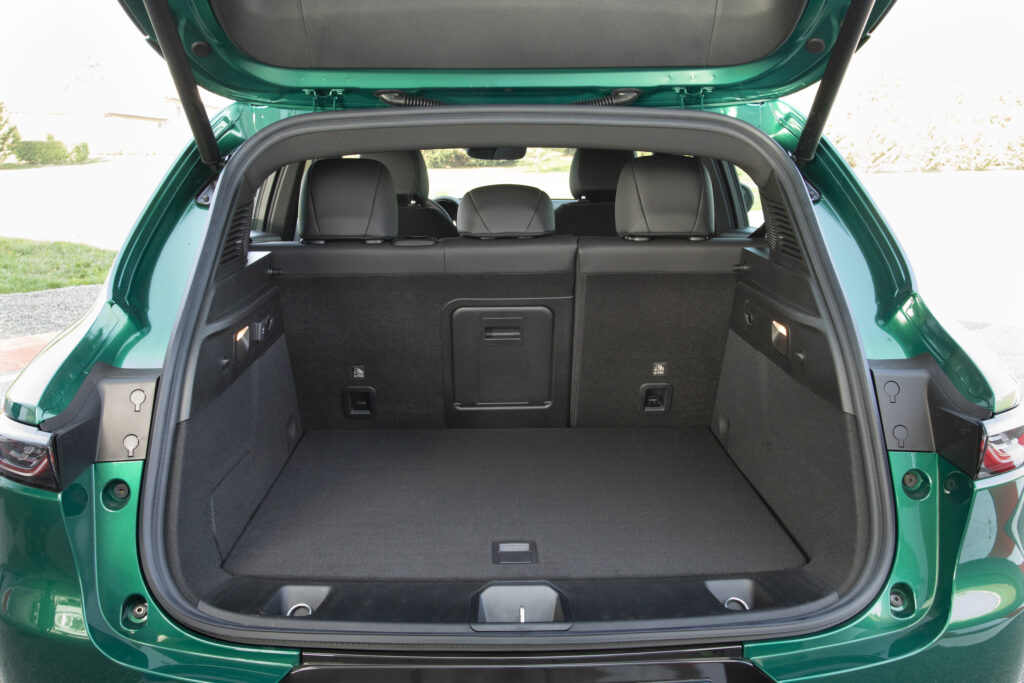
The 385-litre cargo compartment is well shaped. It’s not cramped by the electric motor and its control electronics just below. Flipping the rear seats increases cargo capacity to 1430 litres.

The wrap…
The Tonale Plug-in Q4 is, in some ways, the best Alfa Romeo in ages. But it lacks the seductive and charming driving character that’s the historic basis of the brand’s enduring appeal.
While it is significant as Alfa Romeo’s first step towards a 100 percent EV near future, it’s also a false start. Five years from now, and only four years after it’s due to arrive in Australia, Alfa Romeo won’t be building any PHEVs like the Tonale Plug-in Hybrid Q4.

